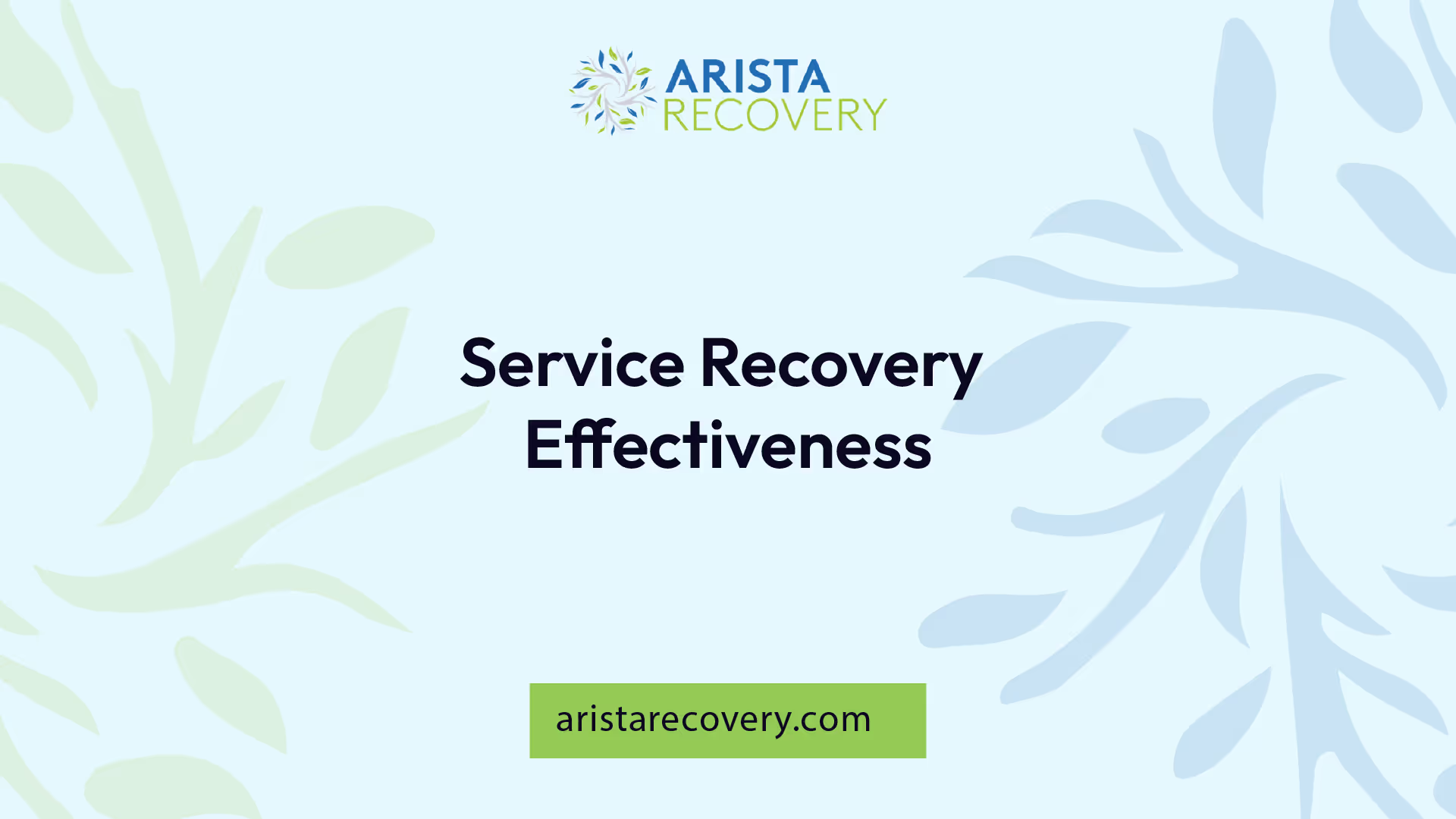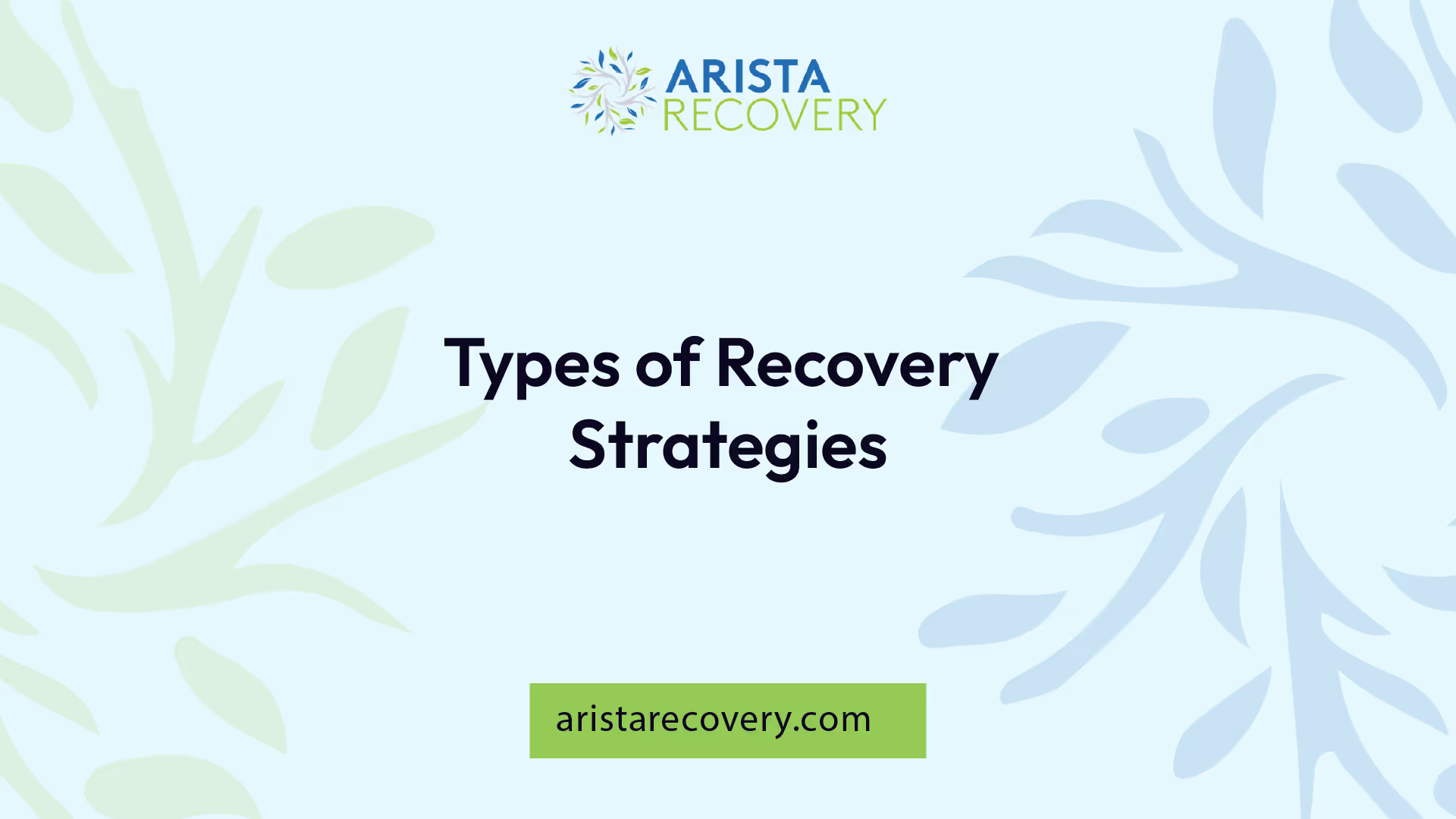Effective Recovery Strategies for Addiction

Recovery Strategies Overview
When dealing with addiction, it's essential to understand the importance of risk assessment and mitigation strategies. These elements form the foundation of effective recovery strategies, providing a roadmap for overcoming the challenges associated with addiction.

Understanding Risk Assessment
Risk assessment is a crucial step in the recovery process. It involves identifying potential hazards and analyzing the possible outcomes of these hazards, taking into consideration various scenarios that could occur as a result of them [1]. Vulnerabilities such as deficiencies in building construction, process systems, security, protection systems, and loss prevention programs can contribute to the severity of damage during an incident.
In the context of addiction recovery, risk assessment can help in identifying triggers and situations that could potentially lead to a relapse. It also assists in determining the resources and support systems needed to overcome these challenges. Techniques such as a risk assessment framework (RAF) can be used to prioritize and share details of the assessment, including any risks to an individual's recovery journey [2].
Importance of Mitigation Strategies
The ultimate goal of the risk assessment process is to evaluate hazards, determine the inherent risk they pose, identify potential effects, and establish risk control measures to offset any negative impact on the recovery process. This is where mitigation strategies come into play.
Mitigation strategies are designed to reduce the impacts of hazards identified during the risk assessment phase. Investing time and effort in creating a mitigation strategy is crucial to lessen the effects of potential hazards. These strategies can include a range of measures, from developing coping mechanisms and creating a strong support network, to engaging in therapeutic practices such as spiritual recovery or emotional recovery.
In the broader context of business recovery, strategies involve risk assessment and planning, communication strategies, resource management, adaptation and innovation, customer focus, supply chain diversification, and employee support and well-being to overcome setbacks and return to operational functionality after a crisis. Similarly, in addiction recovery, a comprehensive approach involving various methods tailored to the individual's unique needs and situation is necessary for a successful recovery journey.
In the subsequent sections, we delve deeper into the different types of recovery strategies and their implementation. These insights will provide a comprehensive understanding of how to harness the power within to unleash effective recovery strategies.
Service Recovery Effectiveness
In the journey of overcoming addiction, service recovery plays a crucial role. It goes beyond merely addressing an issue and restoring satisfaction. Its aim is to transform negative experiences into positive ones, thereby building stronger relationships with those in recovery. This strategy is critical in delivering exceptional support and care [4].

Metrics for Measuring Service Recovery
Measuring service recovery effectiveness is vital, enabling caregivers and counselors to tailor their approaches to individuals' needs. Some of the metrics used to gauge the effectiveness of service recovery include Customer Satisfaction Scores (CSAT), Net Promoter Score (NPS), Customer Effort Score (CES), First Contact Resolution (FCR), and Resolution Time [4].
These metrics help determine the overall satisfaction of individuals in recovery, their willingness to recommend the service to others, the effort they have to put in to get their problems resolved, whether their issues were resolved on first contact, and the time it took to solve the issue.
These measurements are key to understanding the efficacy of recovery strategies and making necessary modifications to ensure each individual's path towards recovery is as smooth as possible.
Real-life Examples of Effective Service Recovery
To understand the effectiveness of service recovery, let's consider some real-life examples from other fields:
- Southwest Airlines received a complaint from a passenger about mishandled baggage. The issue was promptly and effectively resolved, leading to the passenger continuing to fly with the airline.
- Tesla Motors addressed a customer complaint about a faulty charging port quickly. The proactive and customer-centric resolution strategy resulted in increased customer satisfaction and loyalty towards the brand.
- Salesforce received a complaint from a customer regarding technical issues. They promptly acknowledged the complaint, resolved the issue, and offered a service credit. This response resulted in the customer becoming a strong advocate for the platform, further showcasing the long-term impacts of service recovery on satisfaction [4].
While these examples are from the corporate world, the principles of service recovery can be applied to addiction recovery strategies. The focus remains on acknowledging the problem, taking ownership, providing a timely resolution, and following up to ensure satisfaction.
For those in recovery, these examples provide insight into how service recovery can be applied to their own journey, leading to greater satisfaction and success in overcoming addiction. This process is a crucial part of the larger stages of recovery and plays a significant role in both spiritual recovery and emotional recovery.
Types of Recovery Strategies
When diving into the world of recovery strategies, it's important to understand the different approaches individuals can take to conquer addiction disorders. Here, we will explore two main types of recovery strategies, namely Retrenchment Strategies and Turnaround Strategies. These are commonly used in corporate scenarios, but can also be applied to individual recovery journeys.

Retrenchment Strategies
Retrenchment strategies focus on cost reduction and short-term fixes. In the context of addiction recovery, this might involve the individual taking steps to eliminate triggers or detrimental habits that contribute to their addiction.
For instance, appointing a new management team in a company equates to a person in recovery seeking help from a new therapist or joining a new support group. Similarly, reducing assets in a company can be likened to an individual letting go of harmful relationships or environments that fuel their addiction. These strategies can be powerful first steps in the recovery process, paving the way for long-term change.
Turnaround Strategies
Turnaround strategies, on the other hand, are more revenue-oriented and aim to improve the long-term vitality of a company through initiatives like introducing new pricing models or developing new products [5]. When applied to addiction recovery, these strategies involve building new, healthy habits that promote well-being and act as positive reinforcements against addiction.
For example, introducing a new pricing model in a company can be compared to an individual in recovery developing a new exercise regimen or adopting a new hobby. Engaging in these healthy activities can help fill the void left by the removal of addictive substances or behaviors, thereby promoting a successful recovery journey.
Both Retrenchment and Turnaround Strategies can play crucial roles in the stages of recovery, helping individuals overcome addiction and reclaim control over their lives. It's important to remember that everyone's recovery journey is unique, and what works for one person may not work for another. As such, individuals should explore a variety of strategies and choose the ones that best align with their personal goals and circumstances.
In the next section, we will delve deeper into the goals of company recovery strategies, which can provide further insights into the process of addiction recovery. Stay tuned for an in-depth look at Asset Sale, Cost Reductions, Business Strategy Revision, and Revenue Increase strategies.
Company Recovery Goals
When embarking on a recovery journey, it's imperative to set clear and focused goals. In the context of a company, recovery strategies are implemented to address issues that hinder progress. The strategies can be broadly classified under the following goals: Asset Sale, Cost Reductions, Current Business Strategy Revision, and Revenue Increase. These strategies are designed to rejuvenate the firm and steer it towards a path of growth and sustainability [5].
Asset Sale
Asset sale is a recovery strategy that involves selling non-core assets of the company. This strategy is typically employed when certain assets are not contributing significantly to the company's core operations, profitability, or strategic objectives. The proceeds from the asset sale can be used to reinvest in the company's core operations or reduce debts and liabilities.
Cost Reductions
Cost reductions are often a key focus area in corporate recovery strategies. This could involve various actions such as reducing administrative costs, eliminating non-core and low-margin areas from the company's value chain, modernizing equipment, restructuring debts, and reducing interest expenses. These strategies are most effective in situations where cost-cutting measures are necessary for improvement [5].
Business Strategy Revision
The revision of business strategy is another important recovery goal. This process involves assessing the industry context, the company's strengths and weaknesses, competitive capabilities, and the severity of the crisis. The revised strategy should align with the company's strengths and competitive advantages, aiming to strengthen its market position during the recovery process.
Revenue Increase
Revenue increase strategies focus on growing sales volume and income. Companies can implement strategies like increasing prices, expanding product lines, entering new markets, or improving marketing efforts to boost revenue when cost reductions are not feasible. Increasing sales volume is crucial for enhancing short-term income [5].
The implementation of these strategies should be tailored to the specific needs and circumstances of the company, with a focus on sustainable growth and long-term success. The recovery process can be a challenging journey, requiring resilience, adaptability, and a clear vision for the future.
Implementing Company Recovery Strategies
Implementing effective recovery strategies is a crucial part of a company's resurgence from a crisis. These strategies, which include cost reduction and revenue increase measures, are designed to restore business functionality, preserve customer relationships, and rebuild stakeholder trust [3]. It's essential that these strategies are continuously reviewed and adjusted to align with the company's strengths, competitive advantages, and market position.
Cost Reduction Strategies
Cost reduction strategies involve various actions aimed at reducing business expenses. These can include reducing administrative costs, excluding non-core and low-margin areas from the company's value chain, modernizing equipment, restructuring debts, and reducing interest expenses. These strategies are most effective in specific situations where cost-cutting measures are necessary for improvement.
Implementing cost reduction strategies should be done carefully, ensuring that these measures do not compromise the quality of the company's products or services or its long-term growth potential. Keep in mind that the ultimate goal of these strategies is to improve the company's financial health and position it for future success.
Revenue Increase Strategies
On the other hand, revenue increase strategies focus on growing sales volume and income. Companies can implement these strategies by increasing prices, expanding product lines, entering new markets, or improving marketing efforts. Increasing sales volume is crucial for enhancing short-term income, especially when cost reductions are not feasible [5].
However, these strategies must be balanced with the potential impact on customer satisfaction. For example, while increasing prices can boost revenue, it may also lead to customer dissatisfaction if not managed properly. Therefore, companies must carefully consider the potential implications of these strategies on their customer relationships and overall market position.
Strategy Review Process
The strategy review process involves assessing the industry context, the company's strengths and weaknesses, competitive capabilities, and the severity of the crisis. The revision of the strategy should be aligned with the company's strengths and competitive advantages, aiming to strengthen its market position during the recovery process.
This process is a critical part of implementing effective recovery strategies. It allows companies to evaluate their current strategies, identify areas for improvement, and adjust their approach as necessary. It's a dynamic and ongoing process that should be undertaken regularly to ensure that the company's recovery strategies remain relevant and effective.
In conclusion, implementing effective recovery strategies involves a careful balance of cost reduction and revenue increase measures, coupled with a continuous strategy review process. By taking these steps, companies can enhance their resilience, navigate challenges, and position themselves for growth in the post-crisis landscape. For more information on the stages of recovery, check out our article on the recovery process.
Business Recovery Strategies Post-COVID-19
The COVID-19 pandemic has created unprecedented challenges for businesses worldwide, underlining the importance of robust recovery strategies. It's crucial to adapt, pivot, and position for growth in the post-pandemic landscape.
Conducting Business Impact Analysis
A crucial step in developing a post-COVID-19 business recovery strategy is to conduct a Business Impact Analysis (BIA). This process identifies the adverse effects and losses suffered in operations, finances, employees, administration, logistics, and supply chain due to the pandemic.
The BIA should include:
- Identifying key business functions and processes.
- Assessing the potential impact of disruption.
- Prioritizing critical business functions.
- Estimating downtime, recovery time, and resources needed.
This comprehensive assessment enables businesses to gain a clear understanding of the areas most affected by the pandemic, providing a solid foundation for formulating effective recovery strategies.
Outlining Remediation Measures
Once the BIA is complete, the next step is to outline remediation measures tailored to mitigate the impacts of COVID-19. This involves brainstorming practical and cost-effective strategies that address the specific challenges identified in the BIA. Involving employees in these brainstorming sessions can lead to innovative solutions and foster a sense of ownership and commitment to the recovery efforts [6].
These remediation measures might include:
- Implementing remote work arrangements.
- Repurposing production lines.
- Enhancing online services.
- Streamlining operations.
- Exploring new markets or business opportunities.
Resource Allocation for Recovery Strategies
An effective recovery strategy requires a careful balance between the resources needed and those available within the organization. It's essential to determine the minimum resources required for implementing the recovery strategies, including funds, personnel, and assets [6].
This process may involve:
- Establishing a recovery budget.
- Identifying necessary personnel and skills.
- Allocating assets and equipment.
- Prioritizing and scheduling recovery tasks.
By effectively allocating resources, businesses can navigate the challenges of the pandemic, adapt to the new normal, and position themselves for growth in the post-COVID-19 era. Remember, the road to recovery may be challenging, but with a robust strategy in place, businesses can emerge stronger and more resilient. For more insights into recovery strategies, check out our article on the stages of recovery.
References
[1]: https://www.ready.gov/business/planning/risk-assessment
[2]: https://www.techtarget.com/searchsecurity/definition/risk-assessment
[4]: https://www.numrcxm.com/post/service-recovery-effectiveness-cxm
[5]: https://corporatefinanceinstitute.com/resources/management/company-recovery-strategies/
[6]: https://www.linkedin.com/pulse/how-develop-implement-business-recovery-strategy-your-okoroma
You’re not alone in this.
When mental health challenges and addiction intersect, it can feel isolating. At Arista, we offer compassionate, evidence-based, and trauma-informed care to help you heal, grow, and move forward.
You’re not alone in this.
When mental health challenges and addiction intersect, it can feel isolating. At Arista, we offer compassionate, evidence-based, and trauma-informed care to help you heal, grow, and move forward.
Support that moves with you.
You’ve taken a brave first step. At Arista Recovery, we’re here to help you continue with best-in-class care designed for long-term healing and support.
.webp)






